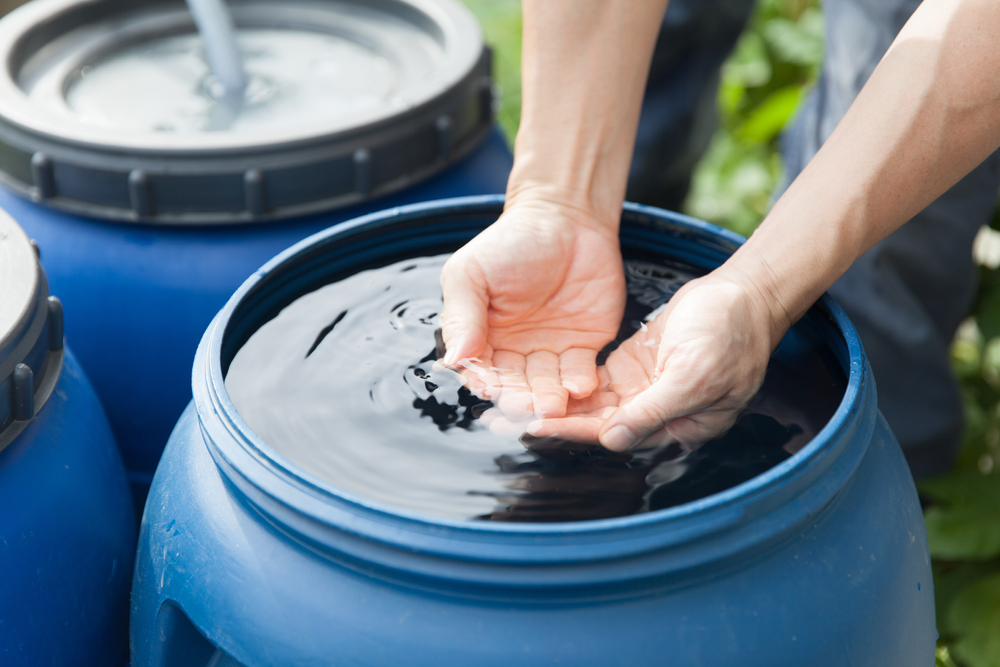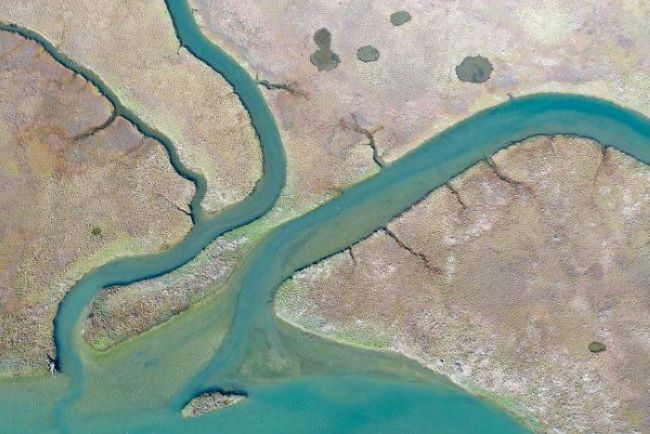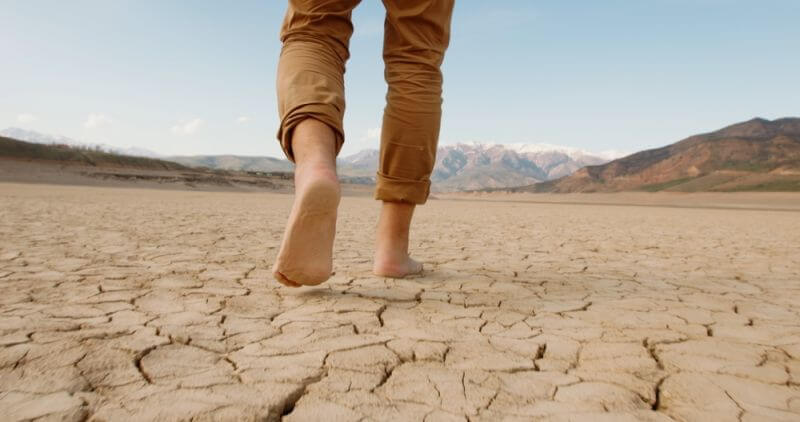It’s common knowledge that you can’t drink saltwater to survive. The concentration of salt in seawater is higher than in our bodies, meaning that the water will actually add salt to the cells in our bodies, preventing the removal of minerals through the kidneys. This can lead to death.
But what do you do when saltwater is your only option? There are situations where the only water available is saltwater. The most obvious of these is being trapped in a lifeboat at sea. But there are man people who live close to the nation’s coasts which may not have a freshwater water source available while having a huge amount of seawater staring them in the face. On top of that, there are many places in the country where well water will be “brackish,” meaning that it has salt, although not as much as seawater.
People living in these situations need an alternative to well water or a means of making the water they have from their wells or harvested from nearby oceans drinkable. Unlike other minerals, salt dissolves so thoroughly in water that it can’t be removed by normal filtration processes. Filters that will remove bacteria and even viruses (which are smaller than 1/20 the size of bacteria) still can’t remove salt from water. Other means are necessary.
Use Rainwater Capture

The first and most logical solution for these people is to use rainwater capture. There are very few places in the country where there is no rainwater available for use. Even arid parts of the country will usually have rain during some time of the year. I live in an arid part of the country, and if I had the storage capacity, I could literally capture enough rain off of part of my roof to survive the year.
That’s the big problem with rainwater capture; not capturing the rainwater but storing it. I don’t care how many rain barrels you connect together. The most water you’re going to be storing in them is a few hundred gallons. If we’re talking about making that rainwater last for months or even possibly throughout the year, you’re going to need a lot more storage capacity than that. The best, low-cost option I’ve found is a large above-ground pool. The chemicals which need to be added to the pool to keep it safe for swimming also make it safe for drinking. Besides, the kids will enjoy it.
While more expensive, another option is to dig a pond and use it to store water. It varies from state to state, so be sure to check for the state you live in, but you should be able to build a pond of roughly 200 acre-feet without a permit. However, in this case, the water can’t be stored in a purified form. The advantage to that is that the pond can be used for raising fish as well. You’ll just need to purify the water before using it as drinking water.
Don’t forget that all rainwater must be purified before drinking it. While rainwater is often considered to be pure, each raindrop forms around a speck of dust. We don’t know what kind of dust that is or what it may contain, so it is best to filter it out. More importantly, birds poop on our roofs, which means that the water falling on them can pick up bacteria and viruses, making it dangerous to drink.
Distillation
Typically, the best way to get the purest water is through distillation. What this means is raising the temperature of the water high enough that it turns to water vapor, otherwise known as steam. When this happens, it leaves everything behind, including the salt.
There are several different ways of making a still to distill water. Perhaps you’ve heard of the “solar still” that requires digging a hole in the ground and covering it with clear plastic sheeting. That’s more of an “I’m lost in the desert” type of emergency solar still than one you might want to use for ongoing desalination of saltwater. While it can be used, it’s not very efficient.
Solar Still
A much better option is to build a solar still in the style of a solar oven. This consists of a box with a sloping glass door that is pointed in the direction of the sun. The inside of the box should be painted flat black to absorb sunlight and convert it to heat. The box also needs to be sealed so that water Aluminum reflectors are attached all the way around, increasing the amount of sunlight that goes into the box, thereby increasing the amount of heat.
There are a couple of potential problems with this sort of solar still. I’ve already mentioned the first, that of needing to seal the case so that the water vapor can’t escape. In addition to that, the way it works is that the water vapor rising hits the glass, condensing back into water. If the glass isn’t at enough of an angle to cause the water to flow down it, it ends up dripping back into the water container rather than being collected. A drip edge of some sort needs to be installed near the bottom of the sloped glass, along with a collection tube that leads outside the still to a container.
The other potential problem with this sort of still is that it needs to be fairly large in order to generate enough water vapor. I made one that was about two-foot square once, and it really wasn’t enough. To get a decent amount of distilled water out of it, it needs to be six to eight feet long.
Fire Powered Heat Still
The old moonshine still is a much better option because you can control the heat, which comes from a fire under the retort that’s holding the water. Of course, that means having a constant supply of fuel for the still and attending it regularly to replenish that fuel.
If you’re not sure what I’m talking about here, the basic design consists of a sealed container to hold the water. A pressure canner would work well for that. It would need to be modified in that the steam outlet, which is usually covered by a weight, would need about 25 feet of copper tubing attached to it. That tubing would then need to be formed so that it slopes downhill, allowing water that condenses inside it to run down to a container. The most common way of making it run downhill is to create a coil out of it.
Water is placed inside, and the container is put over the fire to heat the water. As the water heats, it turns into steam which finds its way out the hole and into the copper tubing. Since copper is one of the best heat conductors there is, the heat will bleed out of the steam and into the copper, where it will be dissipated into the surrounding air. Once enough heat bleeds off, the steam turns back into water which can be collected.
Solar Powered Heat Still
If you’ve got a large Fresnel Lens or a Fresnel Lens solar cooker, that can be used to provide heat to the pressure canner rather than using fire. This method will require moving and refocusing the Fresnel Lens periodically so that the sunlight is focused on the retort, but it eliminates the need for constantly feeding wood to the fire.
Reverse Osmosis (RO)
There is another common means of desalinating water. That is reverse osmosis. Of the nearly 17,000 seawater and brackish water desalination plants in the world, about 75% operate by reverse osmosis. The remaining 25% are multi-stage flash distillation.
Reverse osmosis works by forcing water molecules under pressure through a semi-permeable, ionized membrane. We normally ignore this process in the survival community, because it requires a pump to generate the necessary pressure. That usually means a lot of electric power to make the pump motor work. Unless one were to have a lot of solar power generating capability or use a gas-powered generator, it’s unlikely that there would be enough electricity available to use reverse osmosis.
But are there other options?
One option to that is to use a manual pump to get the necessary pressure, rather than an electric one. Ideally, 60 psi is needed to operate a reverse osmosis system, with a minimal pressure of 50 psi. There are manual pumps available that can produce that much pressure. But that means having someone there to operate the pump.
As an alternative to that, water can be put into a tank and pressurized. There are “pre-charge pressure tanks” which are connected to wells, for the purpose of evening out the water flow. A large one of these could be filled with water and pressurized, then left for that water to run through the reverse osmosis system until the water pressure dropped below the necessary level.
Another option, for those who have a sizeable hill available, is to use gravity to create the necessary head pressure. A height of 40 to 45 feet will provide 55 to 60 psi of water pressure to run the RO system. That requires pumping or hauling the water up to that height; but has the advantage that once the water is in a tank that high up, the pressure will be maintained as long as there is water available. It won’t be necessary to keep the pump operating, as gravity will be what is creating the necessary water pressure.







Tom MacGyver | August 23, 2022
|
I call my doughboy pool “an emergency water storage tank I can swim in.” If push comes to shove, make sure you have a cover for the pool. When power fails you can cover the pool to keep contaminants out and water in. You’d be surprised how much water you lose per day due to evaporation. The cover should be opaque. This will keep algae from growing in the pool. Remember; when the pump shuts off the water will stagnate unless kept from the sun. Depending on what chemicals you put in your pool, you may or may not want to drink it without purifying it. Also, remember that as chlorine breaks down it turns to salt. If the water is sitting there for a long time it WILL get salty. This will even happen when the filtration system is running if you don’t replace a portion of the water periodically. If you use a Diatomaceous Earth (DE) or sand filter, this will happen when you backwash the system. If you use a paper filtration medium you’re not going to backwash. Pool water will evaporate, leaving everything else behind… including salt from broken down chlorine. You add more water and more chlorine and the problem just compounds. I’m talking from experience here.
Personally, I anticipate the pool water to be used for “hygiene” purposes. I keep bottled water and full RV tanks for drinking…
Jeff Patten | September 4, 2022
|
Bill a good story. But in the story where you are using head pressure (a tank above your location to create head pressure ) you have your numbers wrong. In general we use the 2 foot up gives you one pound of pressure. So if you need 50 psi the tank of water will need to be 100 feet elevation above. your location. Need 75 PSI you will need 150 feet elevation above your location. These formulas are used everyday by Firefighters filling the role of Engineer, or Driver operator for pumping operations. I am a 30 year retired firefighter. Hope this helps you out.
Bill Moriarty | September 4, 2022
|
Your psi per foot elevation is incorrect. The conversion factor is 0.433 psi per foot. For 60 psi, it would take 138 feet. (62.4/144)
Larry | September 5, 2022
|
Just so we are being accurate for readers, a 45 foot tall hill x0.4323 lbs of water/square inch per foot will give you about 19.45 lbs of pressure.
To achieve 50 psi, it would require a water source about 115 feet high. But good ideas. For the folks with enough rainwater, a plastic underground cistern can be purchased online anywhere from a few hundred gallons up to over 5,000 gallons. If you can get food grade totes (Intermediate Bulk Containers – IBC’s) – these are palletized heavy plastic tanks in a cage that typically hold 275 or 325 gallons and are more space efficient than barrels. If the water you are storing is strictly for washing and bathing, you really don’t need food grade as long as you rinse out the tanks thoroughly before using. Because they are only semi-opaque, they will allow algae growth unless they are covered completely or kept in a dark building (or the water is treated with chlorine.. Good Luck, all.